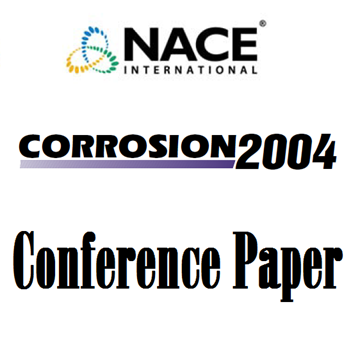Search
Products tagged with 'corrosion resistant alloys'
View as
Sort by
Display
per page
04298 Corrosion Evaluation of a High Performance Cu-Based Alloy for Seawater Applications
Product Number:
51300-04298-SG
ISBN:
04298 2004 CP
Publication Date:
2004
$20.00
A Comparison of the Pitting and Crevice Corrosion of Directional Drilling Alloys With Oilfield Production Alloys
Product Number:
51320-14432-SG
Publication Date:
2020
$20.00
A Semi-Empirical Model for the Prediction of Localized Corrosion of Titanium Alloys in Geothermal Energy Systems
Product Number:
51323-19075-SG
Publication Date:
2023
$20.00
A Theoretical Investigation On The Role Of Microstructural Particularities On The Hydrogen Embrittlement Of Nickel Alloys
Product Number:
51322-17718-SG
Publication Date:
2022
$20.00
Application of The Corrosion Resistant Alloy/ Carbon Steel Bimetal Pipes in Oil and Gas Field Development
Product Number:
51323-19237-SG
Publication Date:
2023
$20.00
Corrosion Of Wrought And Cast Ni-Fe-Cr-Mo Alloys In High-Temperature Brines And CO2-Rich Supercritical Phases With Oxygen And Hydrogen Sulfide
Product Number:
51322-17882-SG
Publication Date:
2022
$20.00
Corrosion Performance of Advanced Ni-Cr-Mo Alloys in Highly Concentrated Acids For Niche Chemical Processing Industry Applications
Product Number:
51323-19399-SG
Publication Date:
2023
$20.00
Corrosion Performance Of Various Types Of Welded And Seamless Tubulars Of Ni-Mo And Ni-Cr-Mo Alloys In Standard Acids And Other Selected Environments
Product Number:
51322-17619-SG
Publication Date:
2022
$20.00
Determination Of Oxygen Limits For Corrosion Resistant Alloys (Cras) In Oil & Gas Produced Water Based On Electrochemical Test Methods – Part 2.
Product Number:
51322-17947-SG
Publication Date:
2022
$20.00
Development Of New Grades Of Titanium-Based Metal Glasses For Dental Applications
Product Number:
51323-19522-SG
Publication Date:
2023
$20.00
Effect Of Deleterious Grain Boundary Phase In N07725 On HISC Resistance And Performance Of An Optimized Alloy
Product Number:
51323-19252-SG
Publication Date:
2023
$20.00
Effect of Temperature on Corrosion in Saturated Ammonium Chloride Solution
Product Number:
51324-20856-SG
Publication Date:
2024
$40.00












